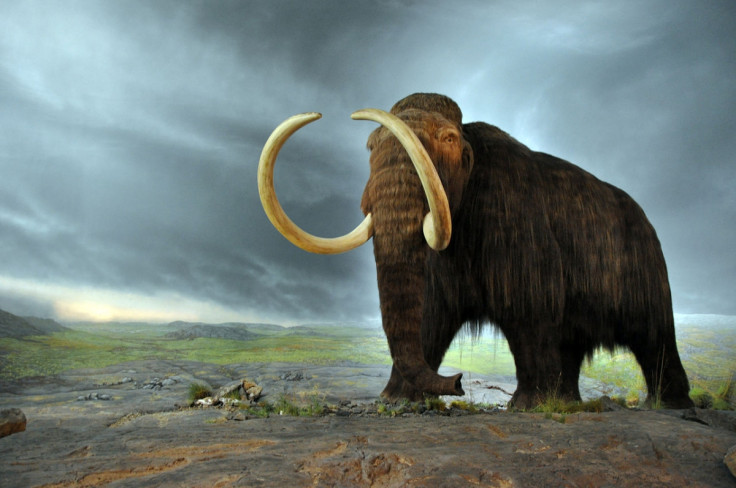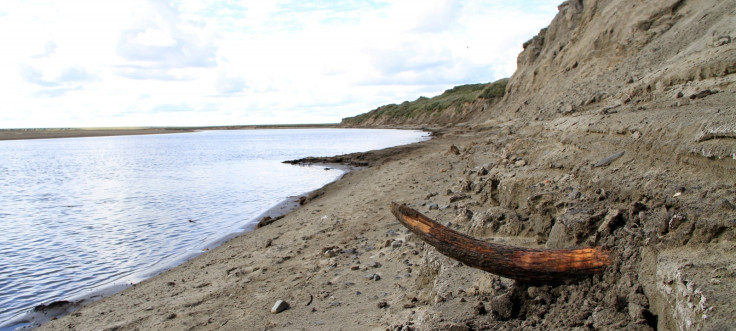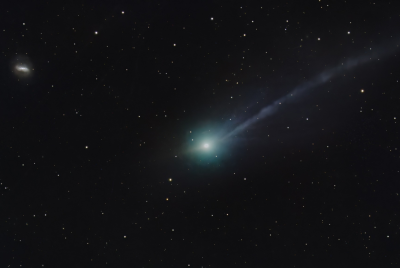Bringing woolly mammoth back 'would be really cool', says extinction scientist

Bringing the woolly mammoth back from extinction "would be really cool", a scientist studying the iconic species has said, but warned a serious discussion of the ethics would need to take place first.
Love Dalén, of the Swedish Museum of Natural History, told IBTimes UK that one of the two methods of de-extinction currently being examined has potential following the publication of a study on two woolly mammoth genomes that shed light on why they went extinct 4,000 years ago.
His study, published in the Cell Press journal Current Biology, compared the genomes of two woolly mammoths – one that lived in north-estern Siberia about 44,800 years ago and another that died on Wrangel Island 4,300 years ago.
The latter showed a huge decline in genetic variation, including large stretches of DNA that showed no variation at all. This is indicative of a very small population where individuals end up inbreeding.
Woolly mammoths ended up getting isolated on Wrangel Island for about 6,000 years, during which time there was only enough room for a population of about 1,000. This inevitably led to inbreeding and could have been the final straw that tipped them into extinction.
Sequencing the genomes from these ancient creatures is extremely difficult – DNA is damaged, fragmented and contaminated. After lengthy screening, the scientists managed to find two samples with well-preserved DNA.
Interestingly, both samples showed there was a huge decline in population between 250,000 to 300,000 years ago. We find this strong signature of a bottleneck – a decline followed by a recovery – and we see it in both the genomes," Dalén said. "And our best guestimate is that this decline around 300,000 years ago was fairly prolonged but it's difficult to say exactly how long. We're not entirely sure why there is a decline there at that point in time.

"It's not surprising they recovered, it's more surprising that they actually declined. What we thought we would find is a series of declines every time it got warmer. During the last 400,000 years there have been at least four warm periods, but we don't see that. We have no idea why. It seems likely it was nothing to do with humans because humans weren't around outside Africa at that time. It could somehow have been driven by changes to the environment, maybe changes to vegetation, but we don't' know."
Looking at the younger sample, he said there was another decline around 12,000 years ago not linked with genetics – it could be human hunting or climate change. However, once they became isolated on Wrangel Island they were somewhat doomed.
With a small population isolated for six millennia, the mammoths would likely have ended up mating with fairly close relatives randomly. This led to gradual inbreeding until it got to the point that mammoths would have had the same amount of diversity as if their parents were siblings: "We think they probably avoided mating with very close relatives, but by the process of many many generations, the strain of the inbreeding builds up over time. Whether or not this caused extinction we can't say."
Dalén said there are two main avenues the scientists now plan to investigate. The first is to try to identify what genes make a mammoth a mammoth compared with an elephant. This involves aligning the two species genomes and finding where they differ.
The second is to look at the Wrangel Island population in more detail. "We have well over 100 samples from the island that are carbon dated and the plan is to sequence as many genomes as we can afford. We want to understand what happened on this island during these 5,000 years in isolation – did the inbreeding gradually increase over time or was it sudden?"

At present, there is a huge amount of interest in the idea of bringing the woolly mammoth back to life. Just last month, scientists at Harvard University successfully copied genes from a woolly mammoth and pasted them into the genome of an Asian elephant.
Meanwhile Korean scientists from the Sooam Biotech Research Foundation are currently looking to recover intact skin cells after they failed to find any well-preserved cells from the bone marrow. They are looking to find an intact genome that could be used for cloning.
The latter, Dalén said, is unlikely to work because they will struggle to find an intact genome: "All the research we have ever done, including the samples they collected, strongly shows these genomes have broken down into about 50 million small pieces. There is no way you can take that nucleus and insert it into a living cell because the nucleus will just fall apart."
However, the Harvard route is more promising, albeit still extremely difficult. "Their idea is that once they can identify the genes that are different between mammoths and elephants then they can cut and paste the genes into the elephant genome, thereby creating a replica of the mammoth genome. Once they have that inside live cells then they can insert that into an elephant egg cell and there you go. But there are a number of steps where it might prove impossible to get beyond, By no means it's certain it will work. But in theory it could."
While still a fair way off, the idea of seeing one of these creatures alive is tantalising: "I think it would be really cool to see it happen. If you work on mammoths and dig up their bones, of course, you want to see one live – to see how it moves, how it acts, how it behaves. On the other hand, before taking the step of putting these things into elephants you need to consider the potential suffering of the elephant.
"I think ethically I'm not sure it's justified. I'm not directly involved, but if it were me I would want to sit down and think hard about the ethics of this before doing it."
© Copyright IBTimes 2025. All rights reserved.






















